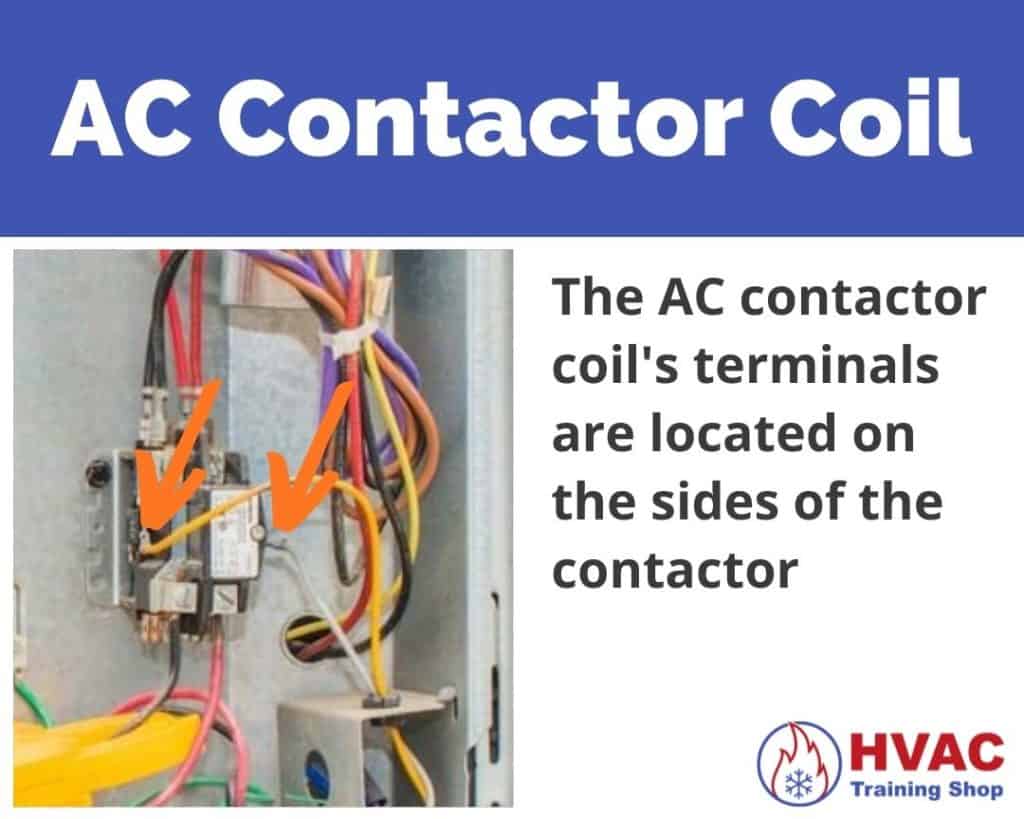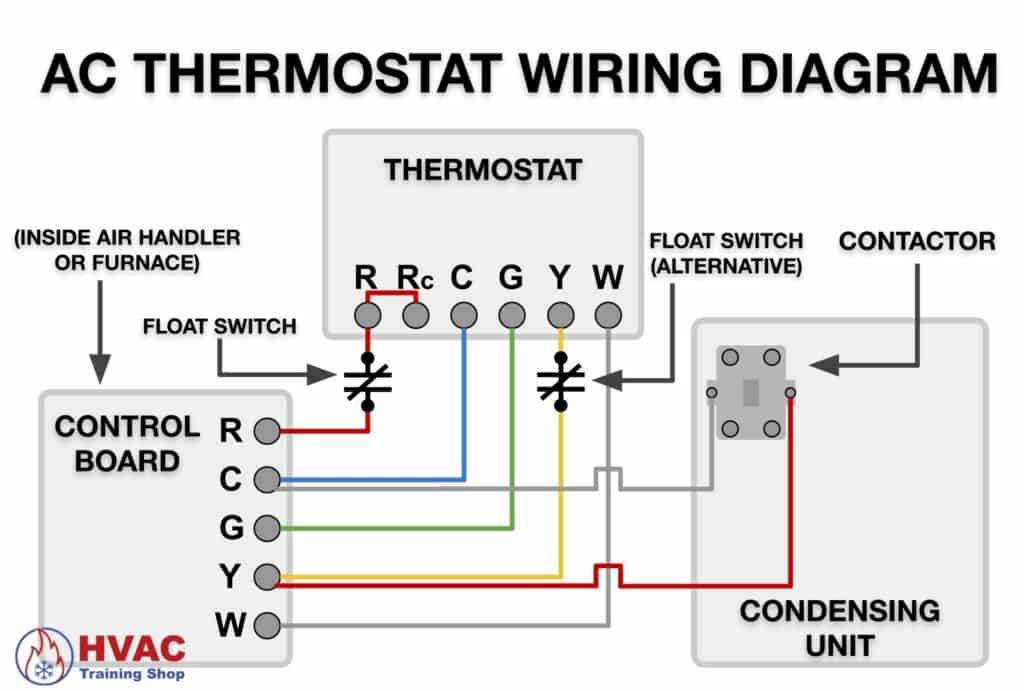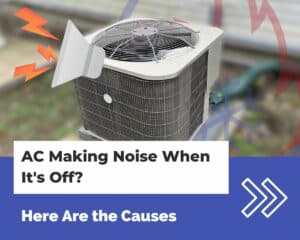Is your AC not running?
One thing that keeps an AC from running is a contactor that’s not pulling in.
But what causes a contactor to not pull in?
In this article, I’ll go over the top causes of a contactor not pulling in. I’ll also go over what you should do if your contactor only works when pushed in.
AC contactor not pulling in causes
If your AC contactor is not pulling in, the first thing that you need to check for is voltage at the contactor coil. If your contactor coil is not getting 24VAC, it will not pull in.
If you find that your contactor is getting 24VAC, the issue could be that the contactor coil is burned out, or there is corrosion on the contacts.
Here are the causes of an AC contactor not pulling in:
- No voltage to the contactor coil
- The condensate switch is triggered
- Wiring connections are loose
- Contactor coil is burned out
- Corroded or pitted contacts
I’ll go over them below.
No voltage to the contactor coil
If your contactor does not receive 24VAC from your thermostat, the contactor will not pull in.
The voltage for the contactor coil ultimately comes from your control board.
In most residential AC systems, the voltage follows this path to the contactor:
- R terminal on the air handler or furnace control board
- R and Rc terminal on the thermostat
- Y terminal on the thermostat
- Y terminal on the control board
- AC contactor coil
If the path between any of the above connections is broken, then your contactor won’t pull in.

Some AC systems have a float switch wired in there as well. The float switch is usually wired between the R terminal on the air handler and the R terminal on the thermostat.
Alternatively, the float switch could be wired between the Y terminal on the thermostat and the Y terminal on the control board.

The condensate switch is triggered
If your AC’s condensate drain pipe or drain pan is clogged, then your condensate overflow switch will trigger and your contactor won’t pull in.
The condensate overflow switch is sometimes wired in series with the wire that goes to your AC contactor. So if your overflow switch triggers, it will cut off power to your AC contactor.
If your AC’s condensate pan or pipe is full of water, you’ll need to find the clog and clean it out.
Wiring connections are loose
If the connections to your AC contactor are loose, then the contactor won’t pull in.
The contactor coil connections need to be snug and tight in order for the contactor to pull in.
If your contactor’s connections are not tight, then the coil won’t energize and your contactor won’t pull in.
Another thing that can happen from a loose connection is “chattering”. Chattering is what happens when the contactor rapidly engages and disengages—like a machine gun.
If your contactor is chattering, check for loose connections on the contactor coil’s terminals. If the connections are loose, they may make an intermittent connection that causes the contactor to chatter.
Contactor coil is burned out
If your contactor coil has voltage but is not pulling in, the coil is burned out.
The coil is the part of the contactor that provides force to pull in the contacts. When the coil is energized, it produces a magnetic field that pulls in the moving core of the contactor.
When the contactor coil is bad or burned out, the contactor will not pull in.
So how do you know if your contactor’s coil is burned out?
One way to check your contactor’s coil is by doing an ohm test:
- Turn off the power to your air handler or furnace AND your AC condensing unit.
- Open up the electrical enclosure on the side of your AC condensing unit. The contactor coil’s terminals are usually located on the left and right sides of the contactor.
- Take a picture of the contactor before removing the wires so you remember where the wires go later. Then remove the wires from the contactor coil’s terminals.
- Turn on your multimeter to the ohms setting and measure the resistance across the contactor coil.
A good coil will measure around 10-20 ohms of resistance.
If the coil is burned out, it will measure a low amount of resistance—usually under 5 ohms.
Corroded or pitted contacts
If your contactor’s contacts are corroded or pitted, the contactor won’t make a good electrical connection when it pulls in and your AC won’t turn on.
Pitted contacts are something that happens to every contactor over time.
Pitting on contacts is caused by electrical arcs when the contactor engages and disengages. The electrical arc creates pitting corrosion on the contacts which increases the resistance of the electrical connection.
Eventually, the contacts will get pitted enough that electricity cannot flow through the contactor and your AC won’t turn on.
If your contactor has corroded or pitted contacts, I recommend replacing the entire contactor. A contactor is pretty cheap and fairly simple to replace so it’s usually not too much trouble.
Some folks will recommend using contact cleaner to clean out the contacts. I don’t recommend using contact cleaner because it’s usually more trouble than it’s worth.
The space between the contacts is very tight and hard to clean.
A lot of newer contactors don’t even expose their contacts, so you need to take apart the whole thing to get to the contacts. At that point, you might as well replace the contactor.
Contactor only works when pushed in
If your contactor only works when pushing it in, then it is not receiving voltage from your thermostat, or the float switch is triggered.
Your thermostat is responsible for sending voltage to your AC contactor to turn it on.
If you don’t hear your thermostat “click” when it goes into cooling, then your thermostat might be causing the issue.
Another issue could be a condensate overflow. If your AC unit’s condensate overflow switch triggers, then it will interrupt the cooling signal from your thermostat and your AC contactor will only work manually.
Another thing that could make your contactor only work when pushed in is if the low or high pressure switch in your AC unit trips.
The low and high pressure switches exist to protect your AC’s compressor from refrigerant pressures outside of its operating zone.
If something causes the refrigerant pressure in your AC unit to get out of whack, the low or high pressure switch will trip and cut off voltage to the contactor.
If you suspect that your AC is having refrigerant pressure issues, I recommend changing the air filter and cleaning the condenser coil. If that doesn’t help, then you’ll need to get an HVAC professional to diagnose your system.



